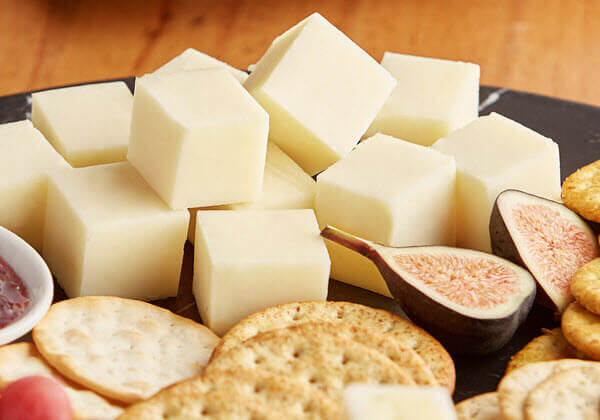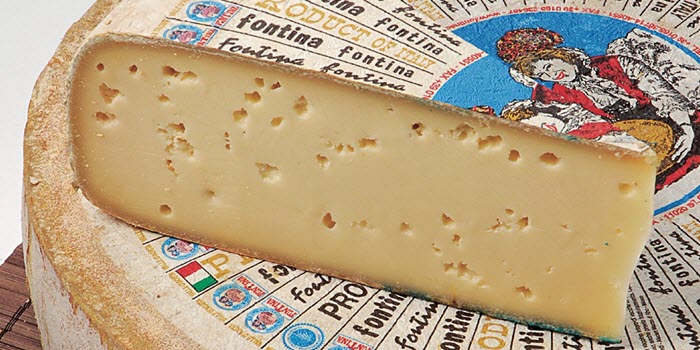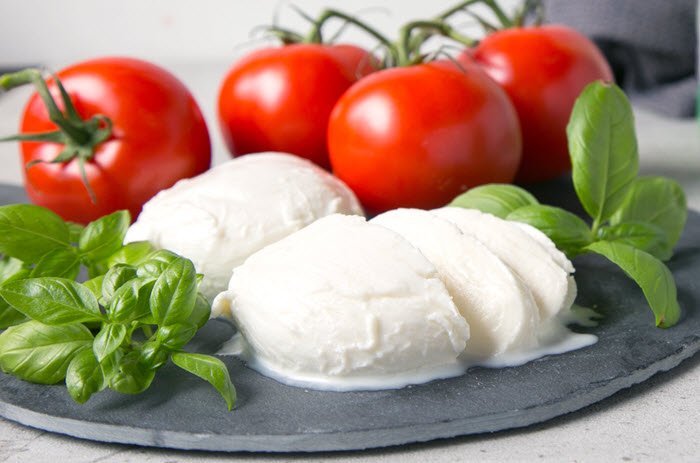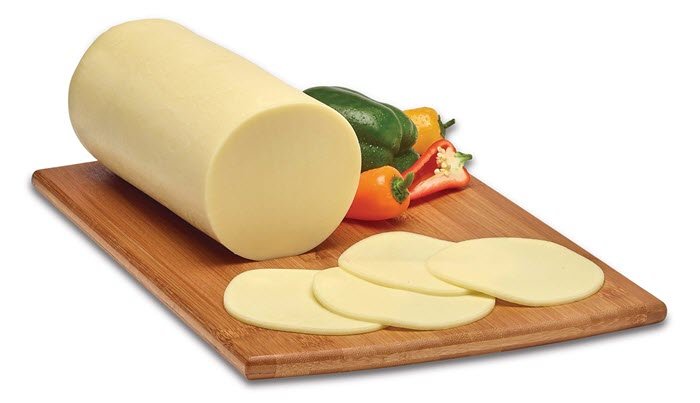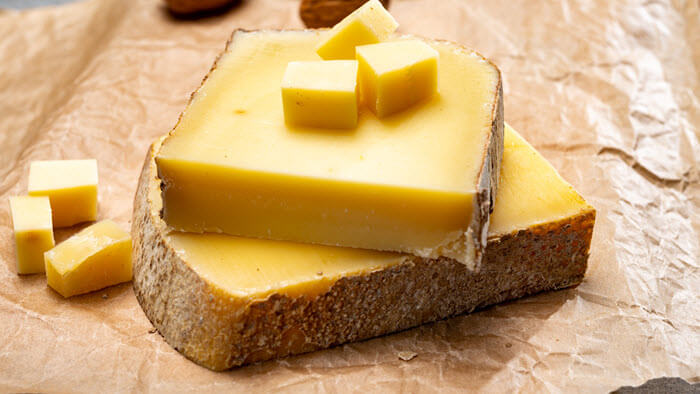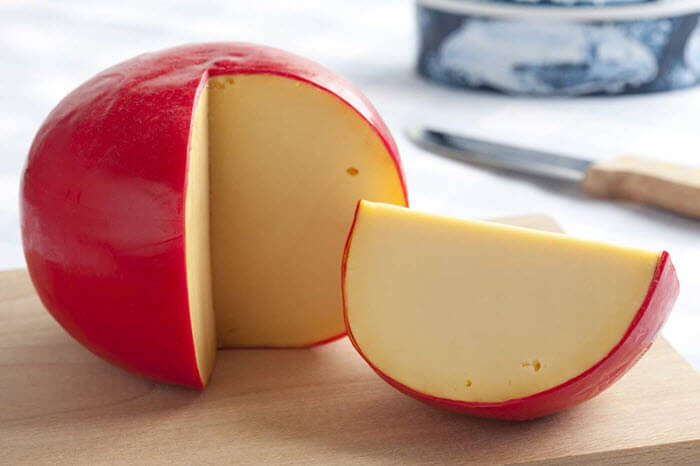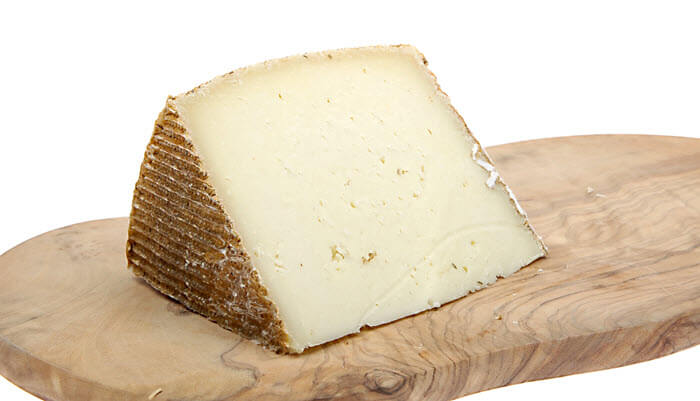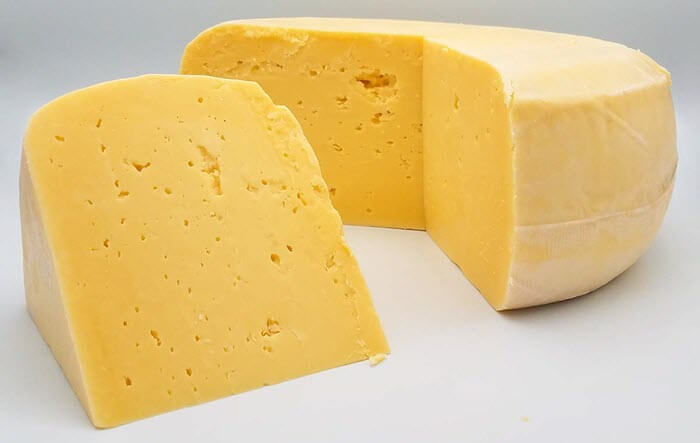Cheeses are a mainstay of the American diet. They’re versatile, tasty, and go well with many different foods. However, sometimes it can be hard to find the exact cheese you’re looking for.
Maybe your grocery store doesn’t carry Swiss cheese, or maybe you just don’t feel like making a trip to the store. In these cases, it can be helpful to know some substitutes for Swiss cheese.
Bonus: If you’re planning to make sandwiches with swiss cheese, you may like our latest research on the best Swiss cheese for sandwiches.
Table Of Contents
What Is a Good Substitute for Swiss Cheese
1. Sharp White Cheddar
Sharp white cheddar cheese is one of the best substitutes for Swiss cheese in quiche, casseroles, pasta dishes, and other recipes. The flavor is nutty, and sharp white cheddar melts well.
High-quality white cheddars are a bit crumbly when cut. Most grocery stores carry some type of sharp white cheddar cheese, so it might be easier to find and purchase than Swiss cheese. While cheddar might lack the signature holes found in Swiss cheese, it is a perfect substitute in most recipes.
Cheddar cheese is made by forming curds into loaves that are then stacked on top of one another to remove excess whey; the process is repeated, which gives the cheese layers, then depending on the artesian, the cheese is aged for a specific length of time.
2. Fontina
Fontina cheese is a good replacement for Swiss cheese in chicken cordon bleu, paninis, and similar dishes.
Fontina is a semisoft cheese with a hard texture and mild to medium flavor. It is a cow’s milk cheese, first produced in Italy. The cheese is rich and creamy and is often used in fondue. Once the cheese is cut, there are often small holes within the round, similar to swiss.
To make fontina cheese, artisans add enzymes to milk to add curd, then that product is strained through a cheesecloth, which is the initial formation of the cheese round.
Generally, a semi-hard cheese, like Fontina, has a springy texture and a blend of savory and pungent flavors.
3. Mozzarella
Mozzarella is also a good alternative. It is a fresh cheese made from curds that have not been pressed or aged.
The mild and slightly savory flavor complements many dishes and ingredients, making it a versatile cheese and an excellent substitute for Swiss cheese in Reuben Sandwich and other recipes.
Mozzarella is springy and dense, and it offers a light aroma of rich cream. Notably, Mozzarella is one of the best melting cheeses and is ideal for making baked dishes topped with cheese. Mozzarella mainly pairs with tomatoes, basil, and dry red wines.
4. Provolone
Provolone is a semi-hard cheese predominantly produced in northern Italy. It has a mild taste and melts quickly because of its firm and slightly grainy texture.
Provolone is a terrific substitute for Swiss cheese because it is a widely available option. The cheese is produced by compressing curds into a solid wheel by draining the whey.
Usually, semi-hard cheeses, like provolone, are aged from one to six months. The buttery, sweet, and rich flavor of provolone works well in any recipe that would call for Swiss cheese.
Further reading: Provolone vs. Mozzarella: Key Differences to Know
5. Gruyere
Gruyère is similar to fontina cheese and is excellent for sauces because of its melting quality and creaminess—gruyère pairs with a wide variety of meats and vegetables. The taste is sharp and includes flavors like hazelnut and butter.
Notably, as the cheese ages, the flavors and texture shift; the cheese is dense when it is first made, but as time passes, gruyère becomes flaky and moderately granular as time passes.
Copper cauldrons are used to create firm curds. No heat is used in the process, which is different than other cheeses. The initial pressing of the curds is about twenty hours. Then, a minimum of five months is required for the aging process.
Swiss cheese and gruyère cheese are sisters in flavor and quality, making their two nearly interchangeable in recipes.
6. Edam
Like Swiss cheese, Edam cheese is semi-hard. It is produced in the northern regions of the Netherlands. Artisans can make Edam cheese with milk from either cows or goats.
Edam intensifies as it ages, so a younger version is the best option to use when replacing Swiss cheese in a recipe. Edam is most commonly paired with fruits, making it a great addition to a cheese plate or complement to a dessert.
After the curds are pressed into a wheel in the cheese creation process, cheesemakers use an exterior salt brine to preserve the cheese and add flavor. Once ready for transport, the cheese is covered in a wax rind that home cooks must remove before enjoying or using in a recipe.
7. Manchego
Manchego, like Swiss, is a semi-hard cheese. Manchego is produced in particular regions of Spain and has a distinctive herringbone ridge.
As the cheese ages, it becomes flakier and tiny pores develop inside the wheel of cheese—very similar to the specific holes that mark Swiss cheese.
Manchego pairs very well with honey and marmalade. Often chefs will batter and fry manchego cheese, so if your recipe calls for a deep-fried Swiss cheese, then manchego should be your go-to alternative!
Manchego is made with sheep’s milk and is often made with natural ingredients, so most gluten-free options. Manchego is growing in popularity in restaurants across the county, so accessing it for recipes is more accessible than before.
8. Gouda
Gouda is produced in the southern Netherlands and is made from cow’s milk. Like Swiss cheese, gouda is semi-hard with a caramel-like flavor with nuttiness. Depending on the age of the cheese, gouda ranges from smooth to sharp.
Indeed, gouda can age from four weeks to more than one year, which results in distinct shifts in flavor. For recipes like Swiss Chicken bakes, using a gouda will add a delicious flavor similar to the original intent.
Be cautious of using a smoked gouda since that flavor is much more intense than its milder, unsmoked counterpart.
9. Pecorino Romano
Pecorino Romano is a hard cheese. Usually, hard cheeses are aged between two months and three years. As with most cheeses, a longer aging process intensifies the flavor of the cheese.
Pecorino Romano is an Italian cheese made from sheep’s milk and uses a process that has been perfected over hundreds of years. It pairs best with natural sweet things like figs and honey.
In recipes that use Swiss cheese, like pasta dishes or quiches, using Pecorino Romano is a great substitute.
Pecorino Romano can be found grated, shredded, or whole at your local grocery store, making it an easy-to-find option.
Summary
Swiss Cheese Substitutes | Best Used For |
Sharp White Cheddar | Quiche, casseroles, pasta dishes |
Fontina | Chicken cordon bleu, paninis |
Mozzarella | Reuben Sandwich |
Provolone | Sandwiches, casseroles, and pizza |
Gruyere | Baking |
Edam | Breakfast cheese, an appetizer, a snack |
Manchego | Spanish tapas |
Gouda | Homemade macaroni and cheese |
Pecorino Romano | Pasta dishes, bread and baking casseroles |
Recipes You Can Make with Swiss Cheese Substitutes
Chicken Cordon Bleu
Quiche
Reuben Sandwich
French Onion Soup
FAQs About Swiss Cheese You May Like
Why does Swiss cheese have holes?
The holes in Swiss cheese are caused by a bacteria called Propionibacterium freudenreichii. This bacteria causes the cheese to release carbon dioxide gas, which creates holes.
Swiss cheese is prized for their appearance and flavor.
Provolone vs Swiss cheese: what’s the difference?
Provolone is an Italian cheese with a mildly sour taste and a distinctive, slightly twisted shape. Swiss cheese is a cow’s milk cheese that originated in the alpine region of Switzerland. Both kinds of cheese are often used in sandwiches and salads due to their mild flavors.
The main difference between them is that Swiss cheese has holes while provolone does not. Swiss cheese is also milder than provolone.
Mozzarella vs Swiss cheese: what’s the difference?
Mozzarella is usually served fresh, while Swiss cheese can be served fresh or it can be aged for several months. Also, Swiss cheese contains at least 33% fat in it while mozzarella’s fat content falls anywhere between 20%-28%.
Final Thoughts
No matter what Swiss cheese substitute you choose, remember that the most important thing is to experiment and find what works best for you.
Try out different combinations of foods and cheeses until you find a combination that you love. With a little experimentation, you’ll be able to enjoy your favorite dishes even when Swiss cheese isn’t an option.
Related Post


